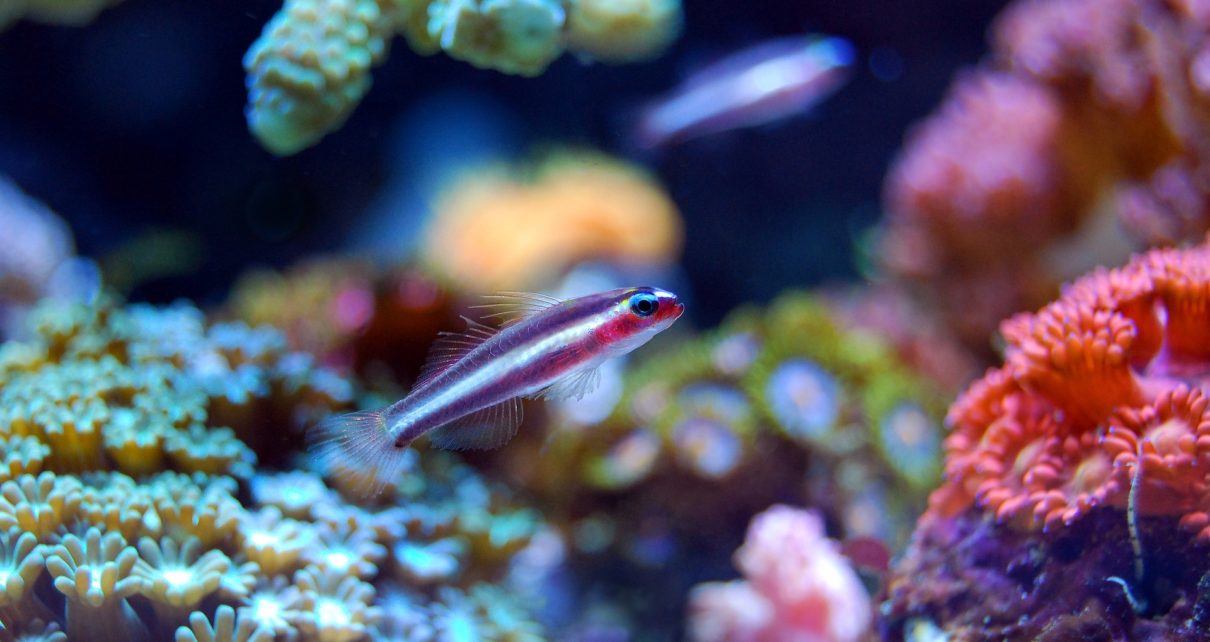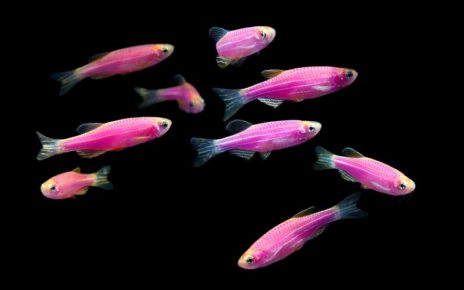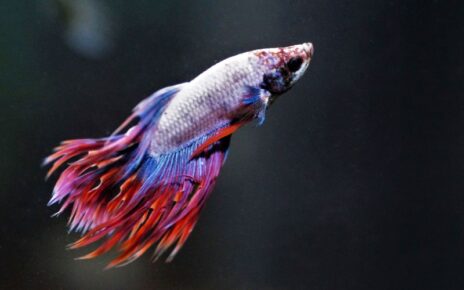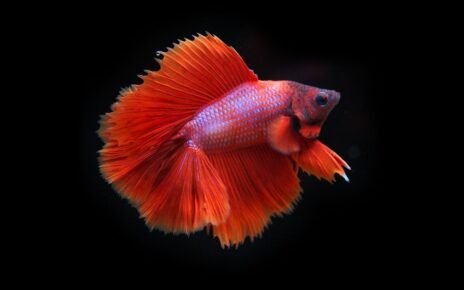In order to keep a thriving reef tank, you need to make sure your water is completely free of any contaminants that might harm your coral colonies. That means you either need to buy purified water from your local fish store, or you can purchase an RO DI System. Owning your own reverse osmosis system will not only save you money and time, it will also allow you to have absolute control over your water reef tanks water parameters. TLDR: Our recommendation for best RO DI system for a reef tank is the SpectraPure MaxCap RO/DI System
Best RO DI System for a Reef Tank
Best Reverse Osmosis Systems
SpectraPure MaxCap RO/DI System
The SpectraPure MaxCap RO/DI System (Buy Online) is our top pick for the best RO DI system for a reef tank. This system has a 90 gallon per day capacity, and it uses a 99% rejection thin-film reverse osmosis membrane. It is also one of the more water efficient reverse osmosis systems since it has a 2 to 1 waste water ratio.
The prefiltration stages of the SpectraPure MaxCap RO/DI System are comprised of a 0.5-micron MicroTec Sediment filter and a carbon block filter. The Sediment filter removes any particles from the water, which will help extend the life of the RO membrane. While the carbon block helps remove any chlorine and other volatile compounds that the other filters can’t handle.
The SpectraPure MaxCap RO/DI System uses two deionization stages to provide ultra-pure ion free water. The dual deionization filters also prolong the life of your DI filter material, so you won’t have to change them as often.
The MaxCap RO/DI System includes a pressure gauge on the membrane inlet. It also comes with a manual membrane flush valve which will help prolong the life of the RO membrane. In addition, all the filter cartridges are totally transparent, so you can easily see when your filter media needs to be changed with just a quick visual inspection.
There are also two TDS meters included with this system. One TDS meter measures the dissolved solids at the inlet, while the other measures the dissolved solids of the finished product. These two meters will allow you to track the performance of the system, and it will also give you a good indication of when it is time to change the filter media.
Pros
- Low Waste
- Good Capacity
- Includes a TDS Meters
Cons
- Size
AquaFX Barracuda RO/DI Aquarium Filter
The AquaFX Barracuda RO/DI Aquarium Filter (Buy Online) offers an excellent balance of price and performance. This system can produce up to 100 gallons per day at full capacity, or if you don’t need that much water there is also a 50 GPD model available.
This compact system uses a 4 stage filtration process in order to produce ultra-pure 0 TDS water. The first stage of this system has a 1-micron sediment filter that will remove large debris in order to prolong the life of the RO membrane. The second stage is comprised of an AquaFx carbon block to remove chlorine and other volatile compounds from the water.
The third stage of the filtration system is the reverse osmosis membrane. This membrane is 100 % made in the USA, which sets it apart from some of the other foreign made RO membranes on the market.
The fourth and final stage is the deionization filter that will take out any of the remaining dissolved solids. The deionization filter uses AquaFx mixed bed color changing DI resin to give a strong visual indication of when the DI filter media needs replacement.
Also included with this system is a pressure gauge so you can make sure your water pressure is powerful enough to properly filter the water. You will also get a ¼ inch hose bib adapter, canister wrench, and 6 feet of tubing included with this system.
Pros
- Output
- Price
- Size
Cons
- Single DI Filter
Aquatic Life Twist-In 100 GPD 4-Stage RO DI Unit
The Aquatic Life Twist-In 100 GPD 4-Stage RO DI Unit (Buy Online) is a compact system with a nice set of innovative features. This filtration system can produce 100 gallons of water per day when it is running a full capacity.
This system uses 4 separate stages to completely remove all traces of dissolved solids from either municipal or well water. The other unique thing about this filter is that it uses a twist-in filter system, which means you don’t need a canister wrench to change the filters. This can save you some time and hassle when you are working in a tight space and trying to change your filters.
The first stage of this RO DI system is made up of a 5-micron sediment filter. This filter helps remove large particles from the water before they reach the RO membrane. The only thing to keep in mind is that a 5-micron filter isn’t the best option available, so if you have very turbid water you might want to go with the SpectraPure MaxCap System instead since it has a 0.5-micron sediment filter.
The second stage in the Aquatic Life Twist-In Unit is the carbon filter. This filter cartridge is made up of activated carbon which can reduce chlorine by up to 99%. Activated carbon will also do a good job at removing some volatile organic compounds from the water.
The third stage in this filtration system is the twist-in reverse osmosis membrane. This filter can remove dissolved solids in the water that are as small as 1/10,000 of a micron. This filter has a suggested lifespan of 1 to 2 years depending on the quality of your water.
The fourth and final stage of the Aquatic Life Twist-In RO DI Unit is the deionization filter. This filter uses a mixed bed color changing deionization resin that will change color from green to amber when the filter media is fully saturated.
Pros
- Size
- Price
- Easy Filter Changes
Cons
- Sediment Filter
- Proprietary Cartridges
Cheap Reverse Osmosis Filters for Aquariums
Aquatic Life RO Buddie Reverse Osmosis System
The Aquatic Life RO Buddie Reverse Osmosis System (Buy Online) is great if you are on a budget and you need a compact RO DI system. This system can produce up to 50 gallons per day of totally pure RO DI water. It is also one of the smallest units on the market, which means it can easily be mounted under a reef tank, or any other out of the way area.
The Aquatic Life RO Buddie Reverse Osmosis System uses the same four-stage filtration process as a full-size system. The only difference is that this system uses smaller filter cartridges than the larger units. The upside to this is that this system can fit into really tight spaces, while the downside is that you will need to change the filters more often.
The first two stages on this filter are the sediment filter and the carbon filter. The sediment filter is a compact RO buddie filter cartridge that polishes the water before it enters the rest of the filter. While the compact carbon cartridge removes chlorine and other contaminants.
The third stage of the Aquatic Life RO Buddie is the reverse osmosis cartridge. This cartridge is a full-size cartridge, so it should last just as long as an RO membrane on a larger unit.
The fourth and final stage on this filter is the deionization filter. This cartridge is filled with an ion absorbing resin that slowly changes color in order to indicate when the media is no longer working. The drawback to the small size of this DI filter is that its small volume will require more frequent media changes.
The other nice thing about this filter is that it comes with a sink/hose bib attachment. That means you can use this RO system without hooking it up to your plumbing. If you want you can carry this RO system from room to room and hook up to any standard faucet. You can also take it with you to a friends house if you want to help them with any tank maintenance.
Pros
- Size
- Price
- Design
Cons
- Frequent Filter Changes
- Output
LiquaGen Portable Aquarium-Countertop Reverse Osmosis System
The LiquaGen Portable Aquarium-Countertop Reverse Osmosis System (Buy Online) is great for someone who is new to RO systems. You have an option to either get one that has an output of 75 GPD (Gallons Per Day) all the way up to 150 GPD.
The LiquaGen Portable Aquarium-Countertop Reverse Osmosis System uses a standard four-stage process just like any of the larger systems. Since this unit is so compact the only change is the size of the filter cartridges. Just like with any of the small portable units this one will need to have its filters changed more frequently than larger models.
The first stage of the LiquaGen Portable Aquarium-Countertop System is an inline sediment filter. This will get rid of any rust, sand or dirt before it enters the other filter cartridges. Then you have the second stage which will remove chlorine and other volatiles using activated carbon.
The third stage of this filter is a full-size RO membrane that has a similar capacity to other larger systems. This membrane will remove any lead, arsenic, radium and any other toxic heavy metals from the water.
The fourth and final stage is the deionization filter. This filter uses a resin to remove any cation and anions from the water that passed through the RO membrane. This filter cartridge will slowly change color from green to amber in order to indicate when a resin change will be needed. The only downside to this DI filter is its small size which will necessitate frequent resin changes in order to keep your total dissolved solids at zero.
Pros
- Size
- Portability
- Price
Cons
- Frequent Filter Changes
Under Sink Drinking Water Reverse Osmosis Systems
Express Water Deionization Reverse Osmosis Water Filtration System
The Express Water Deionization Reverse Osmosis Water Filtration System (Buy Online) is the best reverse osmosis system if you want to produce pure water for your reef tank, and also provide clean healthy drinking water for you and your family.
This RO/DI system uses a 6 stage filtration process to produce the cleanest water possible for both you and your aquarium. This system can output 100 gallons per day, which should be more than enough to meet the water needs of both your reef tank and your family.
The first stage the water will go through on this filtration system is the sediment filter. This filter will remove any dust, rust, sand and other large particles from your water before enters the rest of the filter.
The second and third stages in this filter are both carbon filters that will remove chlorine and other volatile organic compounds from your water. The first carbon filter uses a solid carbon block which passes the water through the pores in the carbon block structure. While the second carbon filter uses granular activated carbon in order to increase the amount of carbon that comes in contact with the water.
The fourth stage is the actual reverse osmosis membrane that will remove any lead, arsenic, fluoride, bacteria, and viruses from the water. The RO membrane will also remove any other particles that are larger than 1/10,000 of a micron.
The fifth stage on this filter is the deionization filter. This filter will capture any of the anions and cations that slipped past the RO membrane. Once your water goes through this filter you can be sure that the filter has captured almost all of the remaining dissolved solids in your water.
The sixth and final stage in this filter is another activated carbon filter that will remove any possible leftover tastes and odors. This filter is especially important if you plan on using this filter for drinking water, while in most cases your fish and coral won’t be able to tell the difference.
This filtration system also comes with a 3.2-gallon storage tank and stand. This storage tank will ensure that you always have pure water available on tap any time you need it. The tank will refill itself in between uses, so you won’t have to wait for the filter if all you want is a quick drink of water.
Pros
- Drinking Water
- Capacity
- 6 Stage Process
Cons
- Size
- Filter Replacements
What is Reverse Osmosis Water
How to Install a RO DI System
How to Purify Tap Water for a Saltwater Aquarium
Choosing the Best RO DI System for a Reef Tank
Before you buy a reverse osmosis system for your reef tank there are a number of factors you need to consider about each system before you make your final decision. While you might think all RO DI systems are the same, not all of them offer the same features which can lead to higher running costs and maintenance costs over the life of the system.
Stages
The number of stages in an RO DI system can play a significant role in the quality of the output of the filter. The number of stages in an RO DI system can also play a role in how often you need to change the filters.
A good example of this is if an RO DI system has two deionization filters or a single one. A single deionization filter will need to be changed more often, and when the resin is spent the ions will just pass right through it.
A RO DI system that uses two deionization filters, on the other hand, will give you some protection from dissolved solids escaping your system. In addition, when the resin in one filter is used up you can simply add new resin and rotate your cartridges so you can evenly wear out your deionization filter media.
If you are also using the RO DI system for potable water you might want an additional carbon filter. Extra carbon filters will help ensure that no off tastes from the filters end up in your drinking water. They can also help remove excess chlorine from heavily treated municipal water systems.
Waste Water Ratio
When a Reverse Osmosis system filters dissolved solids from the water a certain amount of water must exit the system to flush out the contaminants. This brine is usually sent down the drain, so for all intents and purposes, it is completely wasted.
If you are at all concerned about conserving water you will want to get a reverse osmosis system that has a low waste water output. Reverse osmosis systems can waste up to 4 gallons of water for every gallon of fresh water they produce. While some of the more efficient models have a 2 to 1 wastewater to purified water ratio.
There are even reverse osmosis systems on the market that claim to be zero waste, but that is a little bit of a misnomer. These systems recirculate the wastewater back through the RO membrane under high pressure to try to maximize the amount of water they can process. This does help it reduce waste, but it comes at the price of wearing out the filter membrane much faster. The remaining water that can’t be filtered is either mixed into your hot water line, or it is used for flushing toilets or any other gray water uses.
Filter Cost
While the upfront cost of an RO DI system might seem high it pales in comparison to the cost of its maintenance. Over the life of your RO DI system, you will need to replace carbon filters twice a year. While your sediment filters may need to be replaced every few months if you have particularly turbid water.
Reverse osmosis membranes will last up to two years as long as you maintain your pre-filters properly. While your deionization resin may need to be changed 3 to 6 times a year depending on the quality of your water.
All these filter changes can add up over time, so it is always a good idea to figure out filter replacement costs before you buy an RO DI system.
Sources:
https://www.cdc.gov/healthywater/drinking/home-water-treatment/household_water_treatment.html
https://extension.psu.edu/maintaining-home-water-treatment-systems
https://extension.psu.edu/nitrates-in-drinking-water










